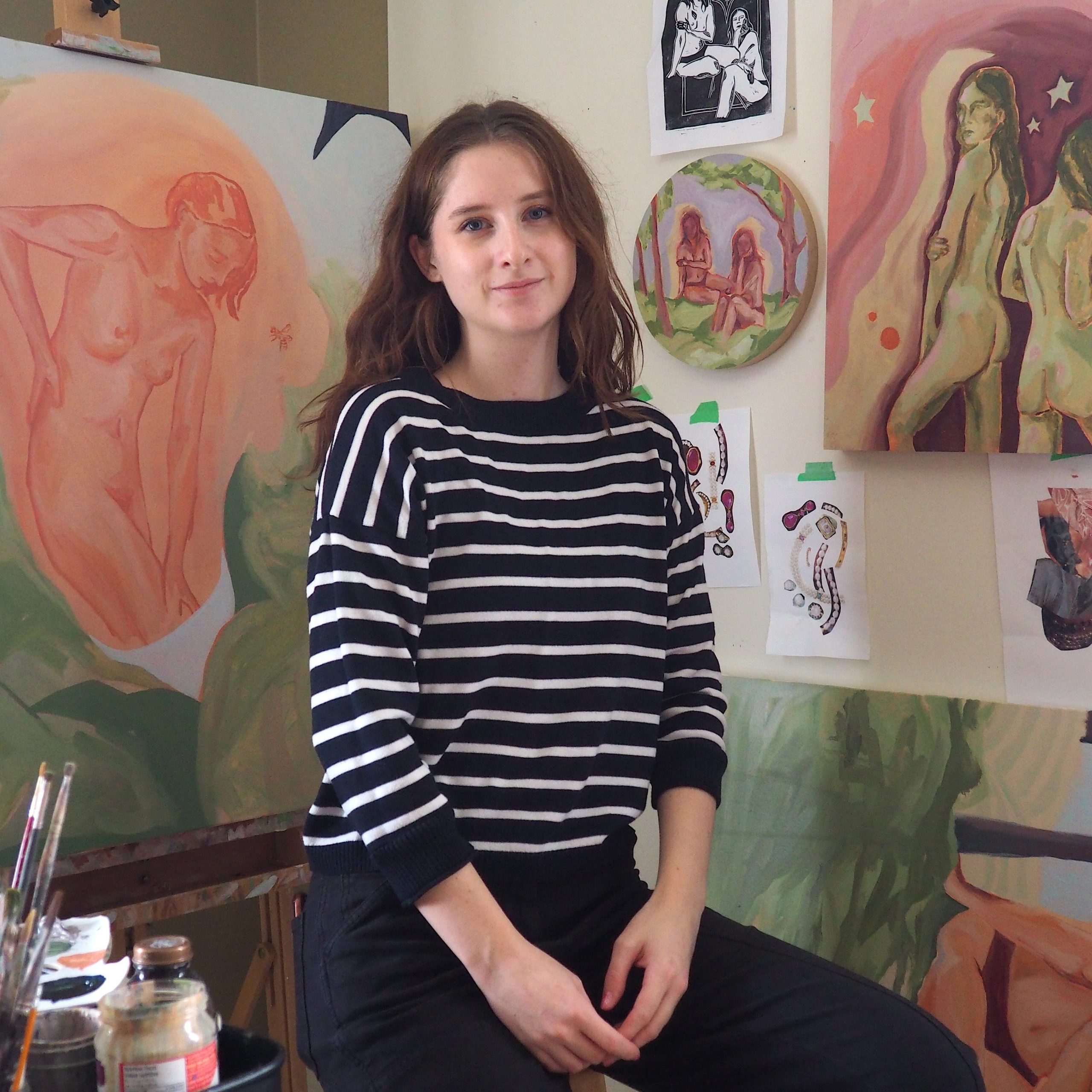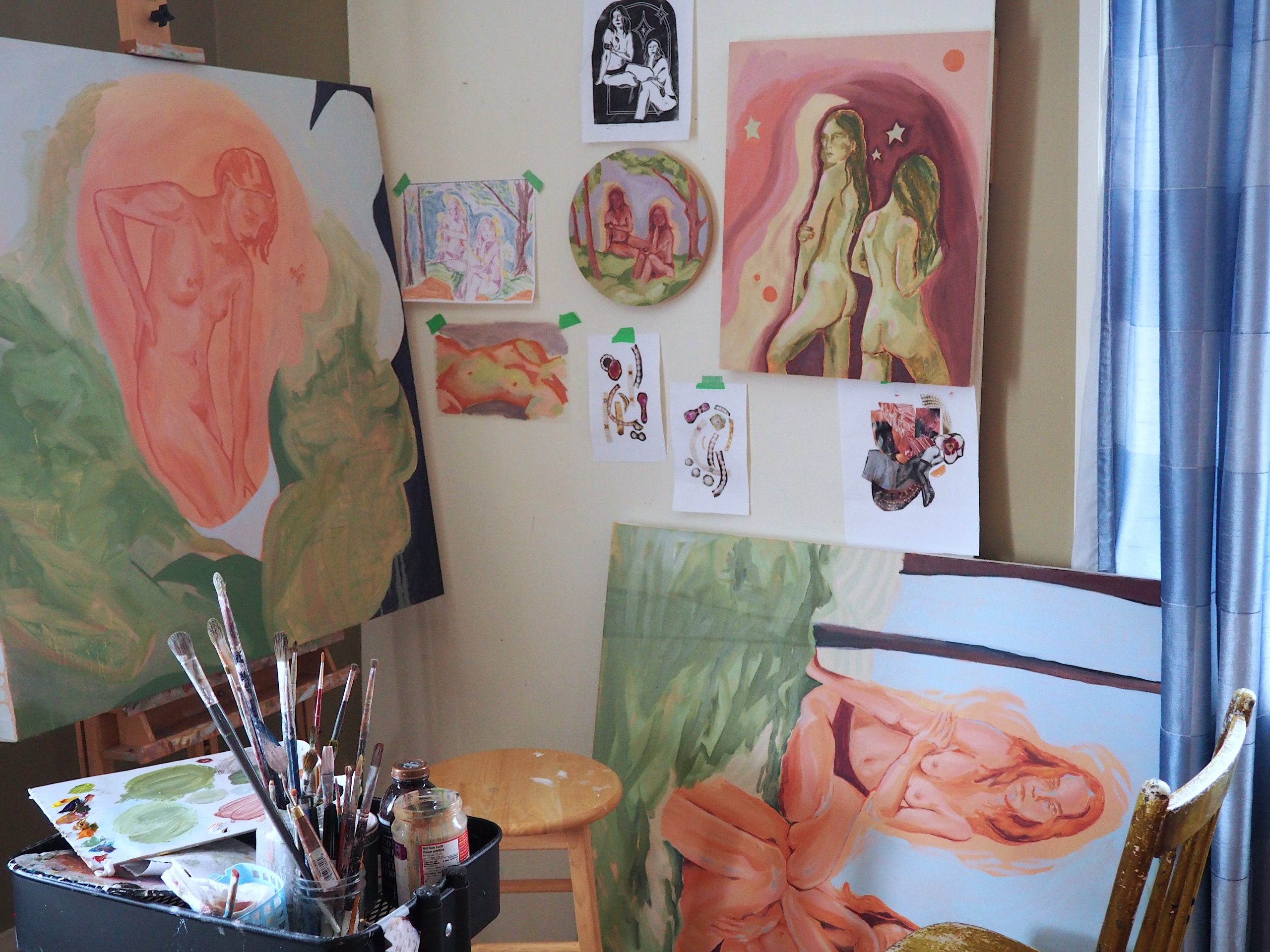In this series, we get to know the Artists behind the work with ten questions about their practice, their space, and their ideas. These are their Stories.
Emily King Simpson
Emily King Simpson is a multidisciplinary artist working primarily in oil painting and textile based sculptural work. She graduated from the Bachelor of Fine Arts program at the University of Ottawa in April 2021 where she was awarded the University of Ottawa Sculpture Prize. She is also a graduate of the Arts Administration and Cultural Management postgraduate certificate at Humber College.
Emily explores queer femininity through personal experiences, queer histories, and cultural productions like feminist theories and lesbian literature. Using both figurative and abstract representation, her paintings engage with these themes. In her textile work, she blends garment construction, embroidery, and fabric painting to examine the connection between fashion, craft, and gender/sexual identity. Emily strives to create work that engages in dialogues surrounding queer feminine identities and the introspective nature of discovering one’s own identity.
Tell us about your artistic journey.
My artistic journey began when I was very young, my grandma taught me how to paint with acrylics and watercolor. She instilled a sense of confidence in me that I really credit to my lifelong dedication to art making. After highschool, I enrolled in the Bachelor of Fine Art program at the University of Ottawa where I developed the basis of my artistic practice. Since graduating in 2021, I have continued to refine my painting practice while continuing my education at Humber College and completing several arts administration internships. While working on the administrative side of things I found new areas of exploration for my work.
How does your artistic process unfold when translating personal experiences into visual narratives?
I usually start by finding existing narratives in literature, mythology, and pop culture that resonate with the personal experiences I’m interested in depicting in my work. I begin with preliminary research-based practices such as taking notes on what I’ve been reading recently or sketching things that I find visually interesting. Once I feel ready to start painting, I start by going through my sketchbook to look for visual themes that stand out to me. From there I begin making studies and collages to construct a composition. Once a painting is complete, I try to write a brief artist statement.
Your practice involves dialogues with feminist theories and lesbian literature. Are there specific texts or theories that have had a profound impact on your work, and how do you incorporate them into your art?
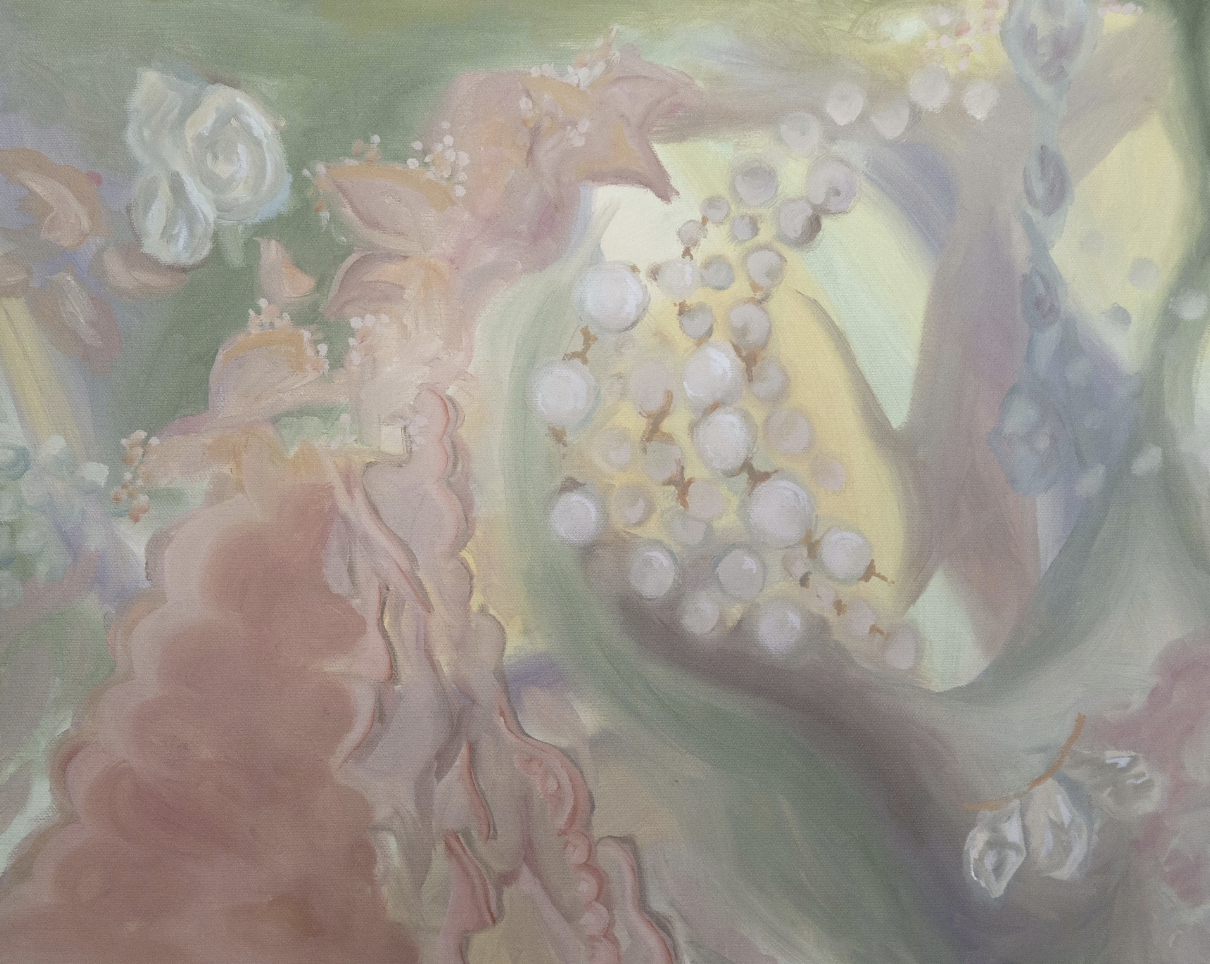
One of the first times I incorporated a text into my work was for a textile piece titled “It was Easy to Say in the Darkness”, where I embroidered a phrase from The Fingersmith by Sarah Waters. This piece led to further investigation into pearl imagery and its significance in lesbian literature, so I would say this novel has had a significant impact on my work. Some feminist texts that have had a significant impact on my work include the essay “Uses of the Erotic: The Erotic as Power” by Audre Lorde and “All About Love” by Bell Hooks.
Are there particular artists or art movements that have inspired or informed your approach to your work?
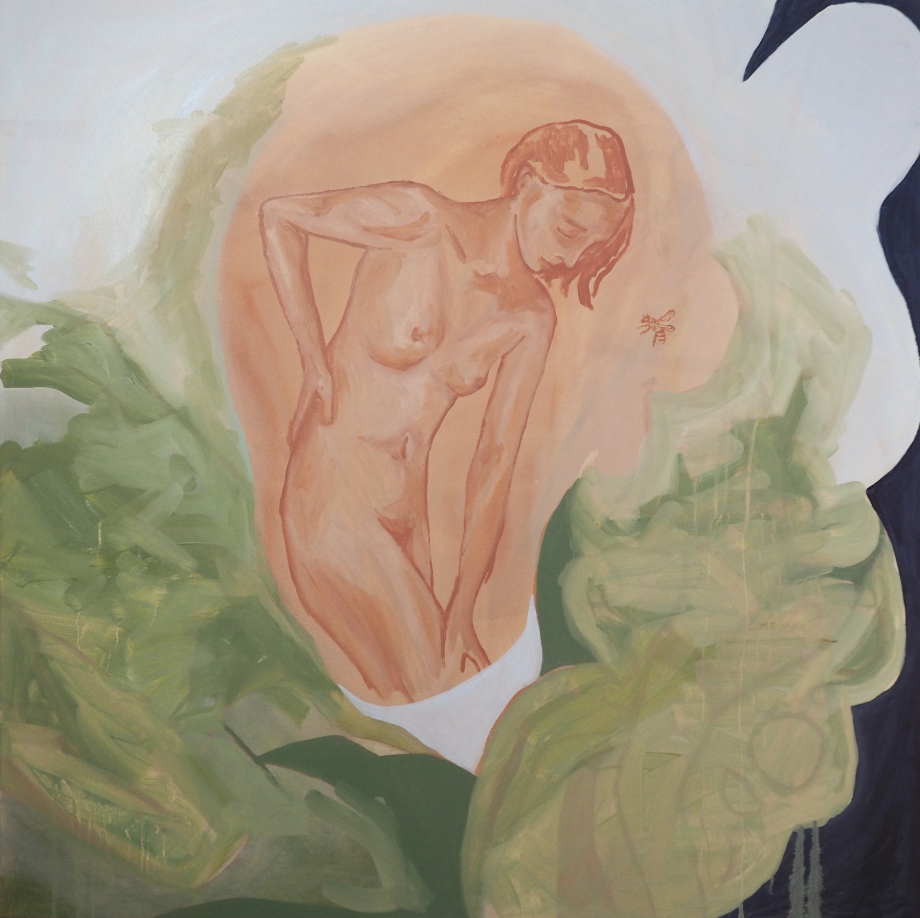
Some of the artists that influenced me greatly while I developed my approach are Paula Modherson-Becker, Helen Frankenthaler, Prudence Heward, and Martha Eidelheit. While studying art history, I was always drawn to artists that were pushing the boundaries of what was socially acceptable for women at the time. Right now I’m really inspired by contemporary artists that are working in figurative painting such as Nadia Waheed, Amy Beager, and Salman Toor.
Could you share a bit about your favourite materials or techniques that you find most expressive in conveying your artistic vision?
I find oil painting to be the most intuitive medium for myself. I like the flexibility it gives me with the long drying time. I also gravitate towards collage as a starting point for my paintings. I find the practice of curating and collecting images for collages to be very meditative.
What do you listen to when you work?
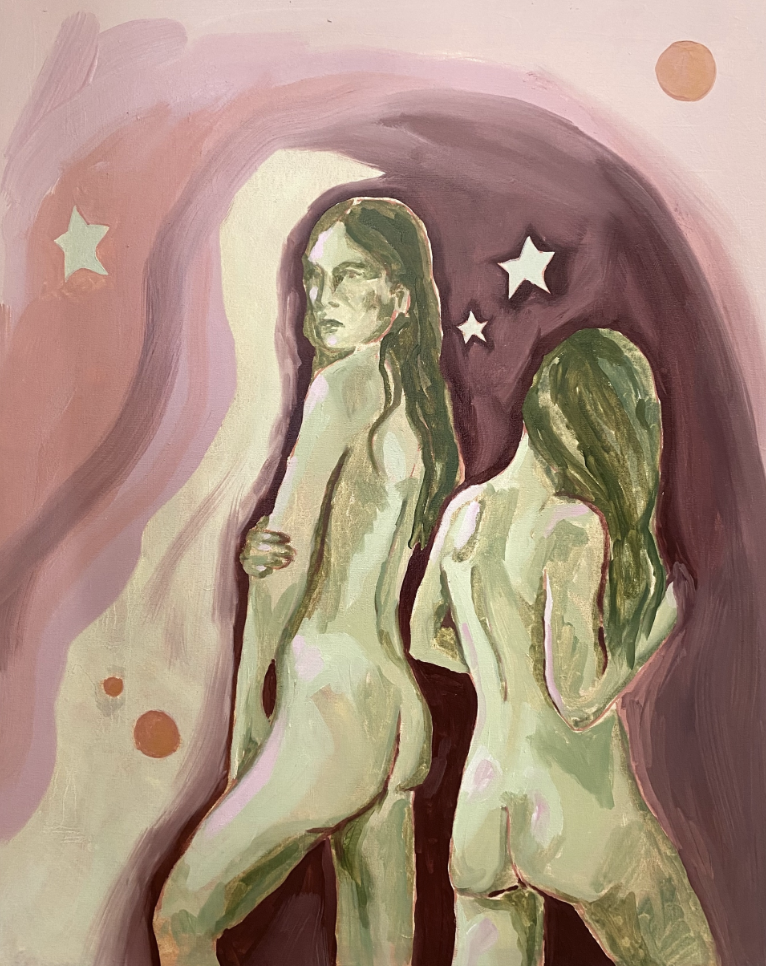
I tend to alternate between podcasts and music. Right now my favorite podcast is Ideas by CBC, and some of my favorite albums are The Land is Inhospitable and So Are We by Mitski and At Last! by Etta James.
If given the opportunity, what is your dream project?
If given the opportunity, my dream project would be to do a collaborative project with a fashion or jewelry brand. I’ve always loved creating patterns and styling outfits. I would love to see my artwork come to life in a wearable format.
What are you currently working on?
Currently I’ve been working on teaching myself printmaking. I first learned how to make linocut prints in highschool and I’ve felt drawn to return to this medium now that my artistic voice is more developed.
What would people be surprised to learn about you?
Something people may be surprised to learn about me is that I worked as a mannequin stylist at Simons throughout my undergrad. I feel really lucky that I was able to find a job where I was able to stay creative when I wasn’t at school.
What is one thing you’ve been loving recently that you’d like to share?

Lately I’ve been loving finding ways to be creative outside of my studio practice. One way that I like to engage in creative practice outside of painting is through dance. Whether it’s taking a recreational dance class, dancing alone in my room, or going out with my friends, I find engaging in movement really helps me to re-centre and come back to my studio with fresh eyes.
